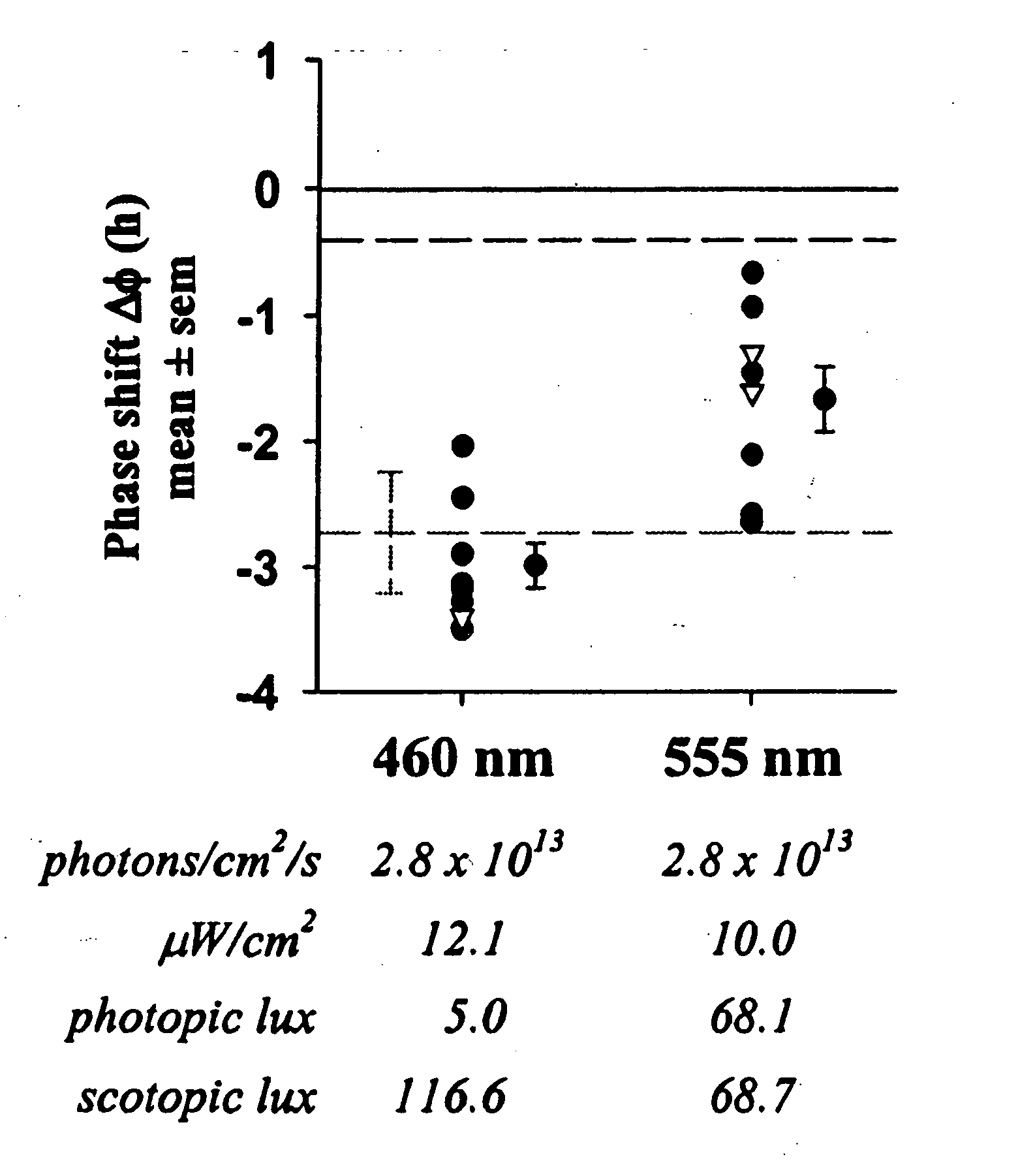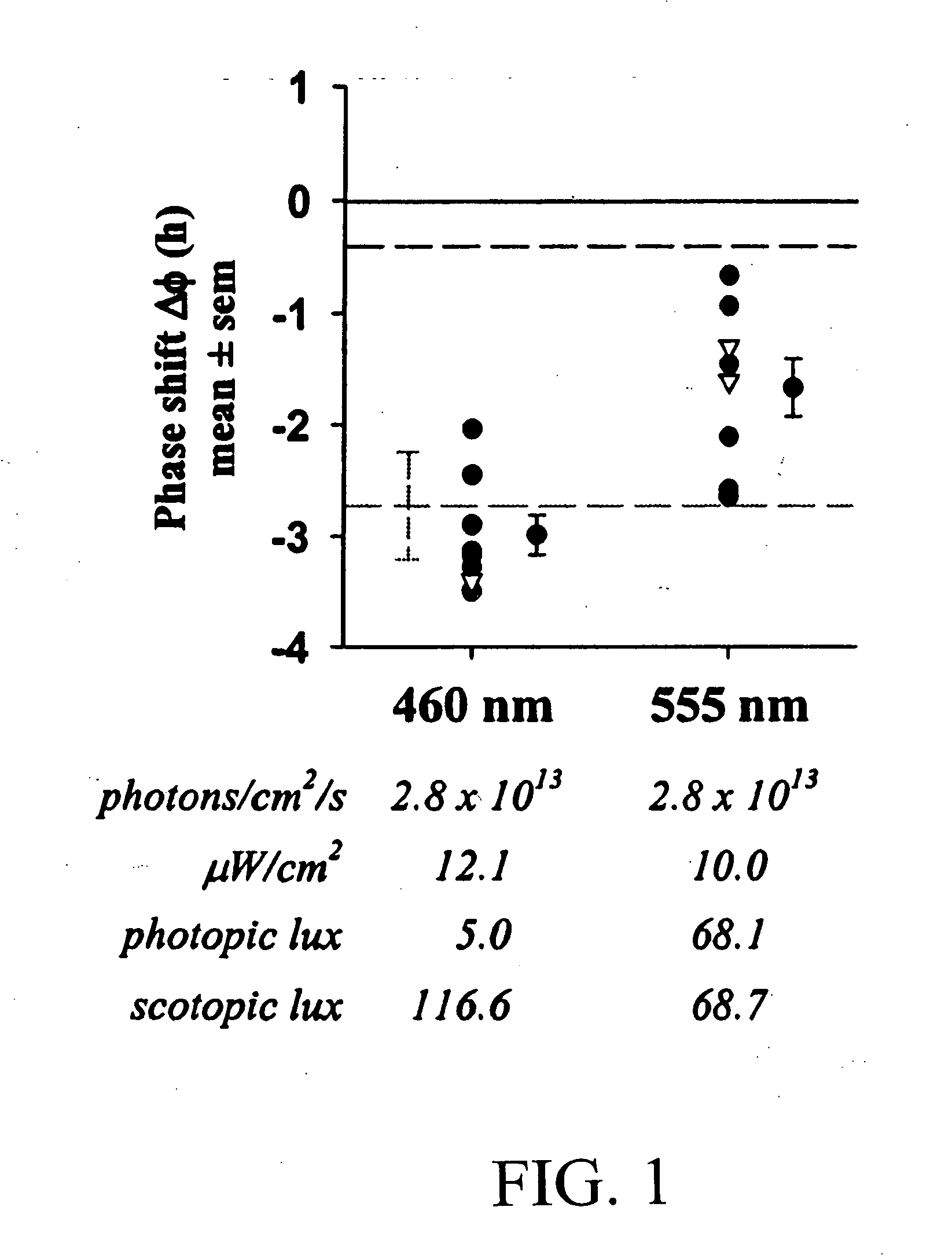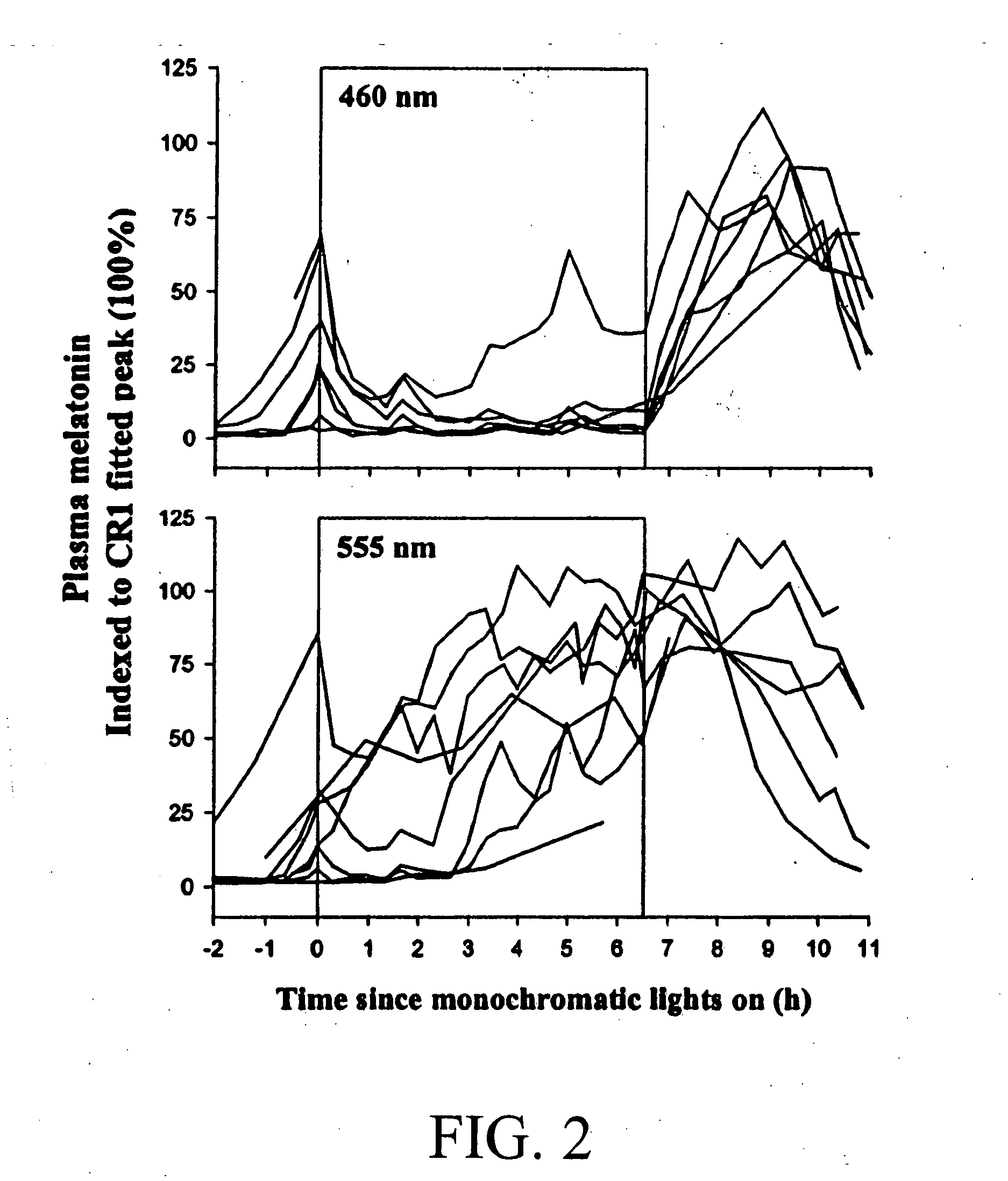Method for modifying or resetting the circadian cycle using short wavelength light
a technology of short wavelength light and circadian cycle, which is applied in the field of modifying or resetting the circadian cycle of a human subject, can solve the problems of not coincidentally, fatigue during the usual activity hours of the destination location and a sense of alertness, experience decreased alertness and fatigue, etc., and achieve effective and efficient modification of the circadian cycle, effective and time/energy efficient
- Summary
- Abstract
- Description
- Claims
- Application Information
AI Technical Summary
Benefits of technology
Problems solved by technology
Method used
Image
Examples
example
[0029] Action spectra for non-image forming (visual) responses in humans have revealed a short-wavelength peak in spectral sensitivity (8max 446-483 nm) for light-induced melatonin suppression and the latency of the cone-driven electroretinogram (ERG) b-wave following light adaptation. It is not known, however, whether similar spectral sensitivities exist for phase-shifts of the human circadian pacemaker. We therefore employed classical photobiological techniques to test the effects of monochromatic wavelengths on photic circadian phase-resetting in humans, as indicated by the timing of the pineal melatonin rhythm. Based on the relative efficacy of the melatonin suppression response, we hypothesized that monochromatic light having a wavelength of 460 nm would induce a greater phase shift compared to light exposure having a wavelength of 555 nm.
Methods
[0030] We studied 16 healthy subjects (8 females and 8 males; mean age±SD=23.3±2.4 years; range 19-27 years) in the Intensive Physio...
PUM
 Login to View More
Login to View More Abstract
Description
Claims
Application Information
 Login to View More
Login to View More - R&D
- Intellectual Property
- Life Sciences
- Materials
- Tech Scout
- Unparalleled Data Quality
- Higher Quality Content
- 60% Fewer Hallucinations
Browse by: Latest US Patents, China's latest patents, Technical Efficacy Thesaurus, Application Domain, Technology Topic, Popular Technical Reports.
© 2025 PatSnap. All rights reserved.Legal|Privacy policy|Modern Slavery Act Transparency Statement|Sitemap|About US| Contact US: help@patsnap.com



